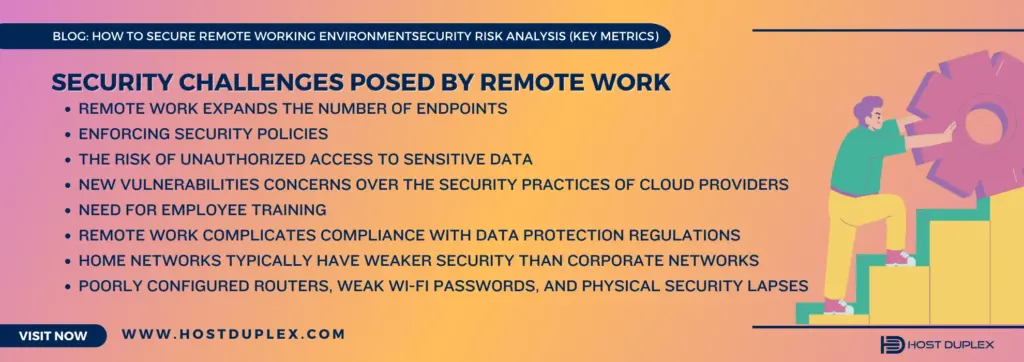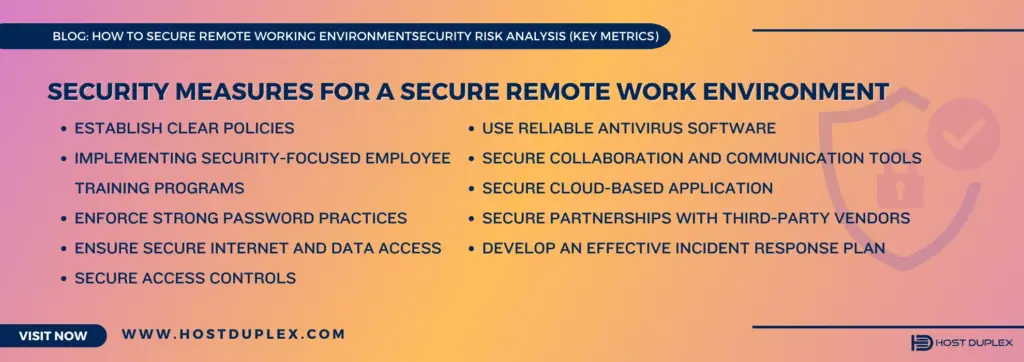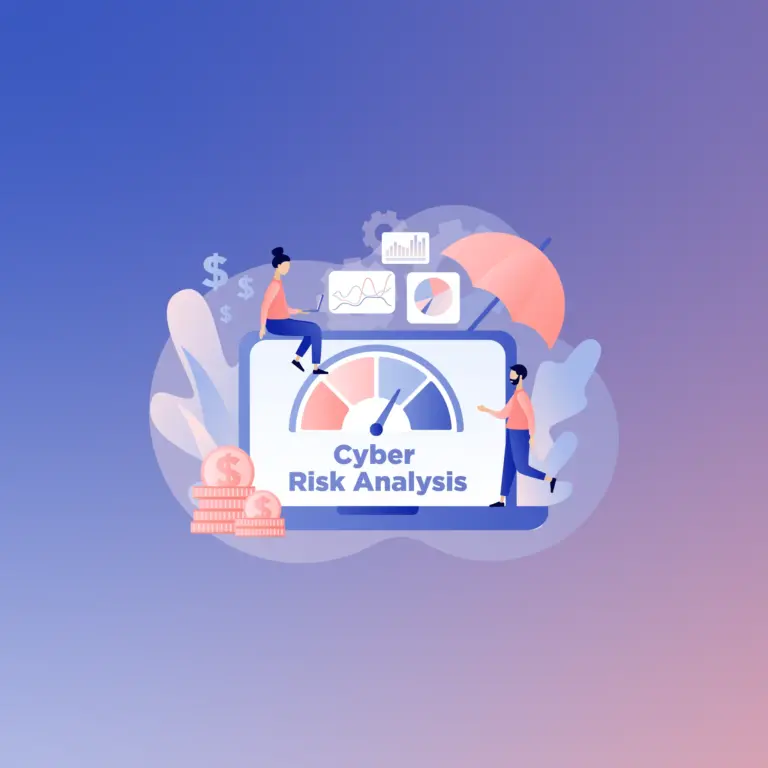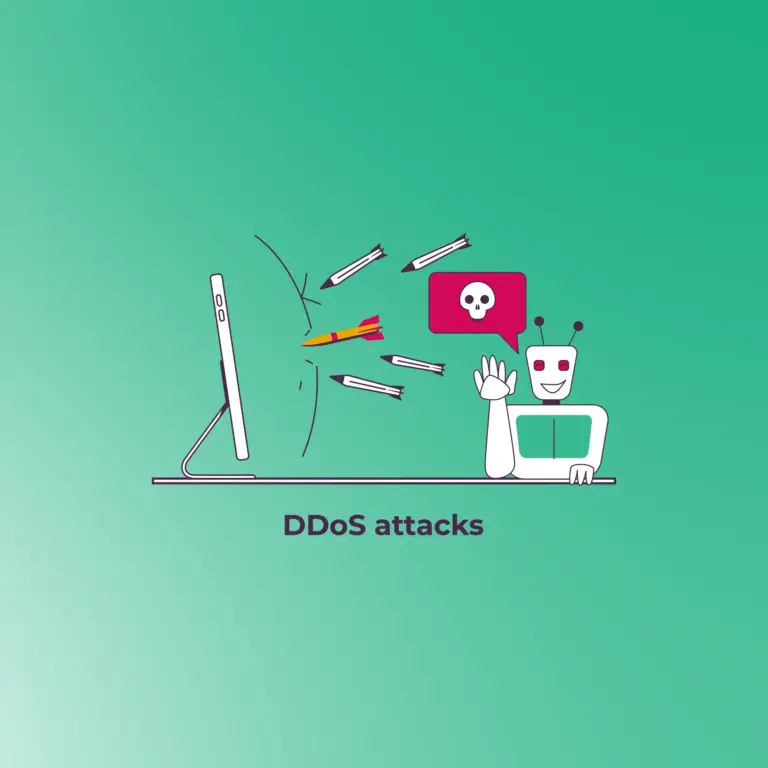Securing remote work environments has become a critical concern for businesses worldwide. According to a recent report by Gartner, 74% of CFOs plan to shift some employees to remote work permanently. The rise of remote work has transformed the way businesses operate, offering flexibility, increased productivity, and a broader talent pool. However, this shift has also introduced new cybersecurity challenges, as they often lack the same level of security controls as traditional office settings.
The growing prevalence of remote work has created a larger attack surface for cybercriminals to exploit. In fact, a study by Tenable found over half of remote workers use a personal device to access work data, and 71% of security leaders lack sufficient visibility into remote employee home networks, leading to a large portion of cyber attacks (67%) targeting remote employees.
Organizations must act decisively to protect their sensitive data and intellectual property. The rapid shift to remote working solutions demands an equally swift response in mitigating the cyber risks created by the expanded “attack surfaces” associated with the “work-anywhere” model. Organizations must thoroughly understand the changes in their cybersecurity risk profile and revamp their cyber risk management strategies , training, and exercises to address these evolving threats.
By the end of this article, you will have a comprehensive understanding of securing your remote working environments and effectively mitigating security risks in this new era of distributed work.
What is Secure Remote Working?
Secure Remote Working refers to the practice of working from a location other than the traditional office environment while ensuring the security of the organization’s digital assets and data. Remote work can be done from anywhere, including home, a coffee shop, or a co-working space.
Secure Remote Working is a combination of security processes or solutions that are designed to prevent unauthorized access to an organization’s digital assets and prevent the loss of sensitive data. Secure remote access can encompass a number of methodologies, such as Virtual Private Network (VPN), multifactor authentication, and endpoint protection, amongst others. The rapidly changing threat landscape and the increased number of remote workers have made secure remote access a critical element of today’s IT environment. Success requires educating users, strengthening cybersecurity policies, and developing best practices in security hygiene.
What Security Challenges Are Posed by Remote Work

Remote work offers many benefits but poses unique security challenges that organizations must address to protect their data and systems. Following is the array of challenges that remote work environments face:
- Remote work expands the number of endpoints (personal devices, company devices, home networks, public Wi-Fi) vulnerable to breaches, requiring robust endpoint security and employee training.
- Organizations face challenges in enforcing security policies on remote workers’ devices, which may lack corporate-level security software and regular updates.
- The absence of a secure physical workplace environment heightens the risk of unauthorized access to sensitive data, necessitating enhanced measures like two-factor authentication and encryption.
- Increased reliance on cloud services introduces new vulnerabilities, with concerns over the security practices of cloud providers and the risks of remote access.
- A significant skills gap in cybersecurity leaves organizations vulnerable, highlighting the need for employee training or collaboration with third-party security experts.
- Remote work complicates compliance with data protection regulations (like GDPR and HIPAA), requiring diligent handling and training related to sensitive data.
- Connection to unsecured public Wi-Fi networks exposes corporate networks to interception and cyberattacks.
- Remote workers are more prone to phishing and social engineering attacks due to less familiarity with organizational security policies.
- Home networks typically have weaker security than corporate networks, increasing susceptibility to cyberattacks.
- Risks include poorly configured routers, weak Wi-Fi passwords, and physical security lapses like leaving work devices unattended in public spaces.
10 Essential Security Measures for a Secure Remote Work Environment

The unique security challenges posed by remote work require organizations to implement a comprehensive cybersecurity strategy that includes the following:
1. Establish Clear Policies and Guidelines
Establishing clear policies and guidelines is the first step in securing remote work environments. Here are some best practices to consider:
A. Outline acceptable remote work practices and security protocols
Clearly define what constitutes acceptable remote work practices and security protocols. This includes guidelines for data handling, device usage, and access control procedures.
B. Address data handling, device usage, and access control procedures
Classify data based on sensitivity level and establish appropriate security policies for each classification. Implement policies and procedures for data handling, device usage, and access control. This includes guidelines for password management, data encryption, and secure file sharing.
C. Communicate policies effectively to all remote employees
Effective communication of cybersecurity policies is crucial for ensuring employee compliance and minimizing security risks. Consider these communication strategies:
- Develop a comprehensive cybersecurity policy handbook that clearly outlines all policies, guidelines, and procedures in an easy-to-understand format.
- Regularly review and update policies to reflect the latest cybersecurity threats and evolving technologies.
- Provide regular cybersecurity awareness training to remote employees, covering topics such as phishing, social engineering, and password management best practices.
- Foster a culture of open communication where employees feel comfortable reporting suspicious activity or seeking clarification on security policies.
2. Implementing Security-Focused Employee Training Programs
Security-focused employee training programs are critical in safeguarding sensitive data and preventing cyberattacks. Organizations can significantly enhance their overall cybersecurity posture by empowering employees with the knowledge and skills to identify, prevent, and respond to cyber threats. Here are some best practices to consider:
- Assess your organization’s security awareness maturity: Before implementing a security-focused employee training program, it’s important to assess your organization’s security awareness maturity. This includes understanding your organization’s security baselines and awareness program, conducting security awareness program training effectively, testing employees to further their training, and revisiting your security awareness program to educate employees on the most current and emerging cyber threats.
- Establish clear policies and guidelines: Establishing clear policies and guidelines is the first step in securing remote work environments. Clearly define what constitutes acceptable remote work practices and security protocols. This includes guidelines for data handling, device usage, and access control procedures. Ensure that all remote employees are aware of the policies and guidelines by providing training and resources to help employees understand the policies and guidelines.
- Conduct regular security awareness training: Conduct regular security awareness training sessions to educate employees on the latest security threats and best practices. This includes training on password management, data encryption, and secure file sharing. Ensure that employees are aware of the risks associated with using public Wi-Fi networks and Bluetooth connections, and provide guidance on how to connect to secure networks.
- Encourage employees to report security incidents: Encourage employees to report security incidents as soon as they occur. This includes reporting lost or stolen devices, suspicious emails, and other security incidents. Provide employees with clear instructions on how to report security incidents and ensure that all reports are handled promptly and effectively.
- Measuring the Effectiveness of Training Programs: Conduct pre and post-training assessments to gauge the effectiveness of training programs and identify areas for improvement. Utilize simulations and phishing exercises to evaluate employee awareness and preparedness in real-world scenarios. Gather employee feedback and continuously refine training programs based on evolving threats and employee needs.
3. Enforce Strong Password Practices
Passwords remain a fundamental line of defense against unauthorized access and data breaches. In remote work, where employees connect to corporate networks from various locations and devices, enforcing strong password practices is paramount to safeguarding sensitive information and maintaining a secure remote work environment. Here are some best practices to consider:
- Create strong passwords: Password security starts with creating a strong password. A strong password is at least 12 characters long, contains a combination of uppercase letters, lowercase letters, numbers, and symbols, and is significantly different from your previous passwords.
- Use a password manager: Consider using a password manager to store your passwords securely. Top-tier password managers are designed to automatically refresh saved passwords, maintain them in an encrypted format, and necessitate the use of multi-factor authentication for gaining access.
- Don’t reuse passwords: Don’t use identical passwords for different systems and accounts. Cybercriminals, upon acquiring your credentials from one site, often attempt to apply these details on numerous other popular sites, including those for banking, social media, and e-commerce. This method, known as a “Credential stuffing attack,” is a prevalent security threat.
- Change passwords regularly: Change your passwords regularly, at least every 90 days. If you suspect that your password has been compromised, change it immediately.
4. Ensure Secure Internet and Data Access
Ensuring secure internet and data access is paramount to safeguarding sensitive information and maintaining a robust cybersecurity posture. By implementing a comprehensive approach that encompasses virtual private networks (VPNs), secure DNS, data encryption, and Zero Trust Network Access (ZTNA), organizations can effectively protect their data assets and minimize the risk of cyberattacks.
A. Require Virtual Private Networks (VPNs) for Secure Access
Virtual private networks (VPNs) create secure tunnels for data transmission, encrypting traffic and protecting it from unauthorized access. When remote workers connect to corporate networks through VPNs, data remains protected even when using public Wi-Fi networks.
- Implement a reliable VPN solution and configure it properly to ensure strong encryption protocols and secure authentication mechanisms.
- Educate employees on the importance of using VPNs whenever connecting to corporate networks from outside the office, emphasizing the benefits of secure data transmission.
- Maintain up-to-date VPN software and firmware to ensure the latest security patches and vulnerability fixes are applied.
B. The Necessity of Secure DNS and DNS Filtering
The Domain Name System (DNS) functions by converting website names into IP addresses, enabling access to online platforms and services. However, DNS can be vulnerable to spoofing attacks, redirecting users to malicious websites. Secure DNS services protect against these threats, ensuring that users are directed to legitimate websites.
- Implement a secure DNS service that provides encryption and spoofing protection, preventing unauthorized redirection and ensuring users reach the intended websites.
- Utilize DNS filtering to block access to known malicious websites, preventing employees from inadvertently visiting phishing sites or downloading malware.
- Maintain up-to-date DNS records and threat intelligence feeds to ensure continuous protection against emerging threats and newly discovered malicious websites.
C. Implement Strong Data Encryption Tools
Data encryption scrambles data so that it cannot be read without the correct decryption key. This protects sensitive data at rest and in transit, ensuring that even if data is intercepted, it remains unreadable to unauthorized individuals.
- Implement data encryption for all sensitive data, including files, emails, and cloud storage.
- Utilize strong encryption algorithms and protocols, such as AES-256, to ensure the highest level of data protection.
- Implement robust key management practices and access controls to protect encryption keys and prevent unauthorized access to sensitive encrypted data.
D. Zero Trust Network Access (ZTNA) Approach
Zero Trust Network Access (ZTNA) is a security model that assumes no user or device is inherently trusted, requiring continuous verification and authorization for every access attempt. This approach minimizes the risk of unauthorized access and data breaches.
- ZTNA Implementation and Configuration: Implement a ZTNA solution and configure it to enforce granular access controls, granting access only to authorized users and company devices for specific resources.
- Continuous User and Device Verification: Implement continuous user and device verification mechanisms, such as multi-factor authentication and device posture checks, to ensure ongoing trust validation.
- Microsegmentation for Reduced Attack Surfaces: Implement network segmentation to isolate sensitive resources and limit the potential impact of a security breach, minimizing the attack surface for cybercriminals.
5. Secure Access Controls
Access controls are a crucial aspect of securing remote work environments. They are designed to prevent unauthorized access to sensitive data and resources. Organizations should evaluate their security requirements and choose the appropriate access control solutions based on their needs. Here are best practices for implementing access controls in remote work environments:
- Identity and Access Management (IAM): IAM is a framework that enables organizations to manage user identities and access to resources. It is a critical component of access control in remote work environments. IAM solutions provide centralized management of user identities, authentication, and authorization. They also enable organizations to enforce security policies and monitor user activity. Some popular IAM solutions include Microsoft Azure Active Directory, Okta, and OneLogin.
- Multi-Factor Authentication (MFA): MFA is a security mechanism that requires users to provide two or more forms of authentication to access company systems and resources. It is an effective way to prevent unauthorized access to sensitive data and resources. MFA solutions can be implemented using various methods, such as SMS, email, biometric authentication, and hardware tokens. Some popular MFA solutions include Microsoft Authenticator, Google Authenticator, and Duo Security.
- Role-Based Access Control (RBAC): RBAC is a security model that enables organizations to manage user access based on their roles and responsibilities. It is an effective way to ensure that remote users have access only to the resources they need to perform their job functions. RBAC solutions provide centralized management of user roles, permissions, and access policies. Some popular RBAC solutions include AWS IAM, Azure RBAC, and Google Cloud IAM.
- Privileged Access Management (PAM): PAM is a security mechanism that enables organizations to manage and monitor privileged access to resources. It is an effective way to prevent unauthorized access to sensitive data and resources. PAM solutions provide centralized management of privileged accounts, access policies, and activity monitoring. Some popular PAM solutions include CyberArk, BeyondTrust, and Thycotic.
- Network Access Control (NAC): NAC is a security mechanism that enables organizations to control access to their network. It is an effective way to prevent unauthorized access to sensitive data and resources. NAC solutions provide centralized management of network access policies, device compliance, and activity monitoring. Some popular NAC solutions include Cisco Identity Services Engine, Aruba ClearPass, and Forescout.
6. Use Reliable Antivirus Software
As remote employees access and handle sensitive data, it is essential to equip their devices with robust antivirus protection. Antivirus software acts as a vigilant sentinel, scanning files, emails, and web traffic to identify and neutralize malicious threats. Here are some tips to help you choose the right antivirus software for your remote work environment:
- Choose a reputable antivirus software provider
- Look for features that meet your needs
- Ensure compatibility with your devices
- Keep your antivirus software up to date
- Consider cloud-based antivirus software
7. Secure Collaboration and Communication Tools
With the rise of remote work, the need for secure collaboration and communication tools has increased. These tools enable effective team communication, tracking work progress, and driving modern workplaces. However, an online collaboration tool with a weak cybersecurity system could increase the risk of cyber threats and knock any company down if left unsecured.
A secure collaboration platform has proper authentication and authorization measures to minimize the chances of data leaks. This is crucial since information is constantly shared between employees, clients, and partners on collaboration tools. Additionally, secure collaboration software can prevent people from phishing into your pool of organizational information! Here are the top secure collaboration and communication tools:
8. Secure Cloud-Based Applications
Today, we live in the era of big data, with companies generating, collecting, and storing vast amounts of data by the second, ranging from highly confidential business or personal customer data to less sensitive data like behavioral and marketing analytics. Beyond the growing volumes of data that companies need to be able to access, manage, and analyze, organizations are adopting cloud services to help them achieve more agility and faster times to market and to support increasingly remote or hybrid workforces. The traditional network perimeter is quickly disappearing, and security teams are realizing that they need to rethink current and past approaches to securing cloud data. Here are some best practices for securing cloud-based data and applications:
- Choosing a reputable cloud service provider is the first step toward securing data.
- Understand your security responsibilities and the security measures provided by your cloud service provider.
- Implement encryption to protect your data from unauthorized access.
- Protect your data wherever it lives or travels, whether it is at rest or in motion.
- Monitor your cloud activity and know your security posture to detect and respond to security threats.
- Use secure APIs to ensure that your cloud-based data and applications are secure.
9. Secure Partnerships with Third-Party Vendors
Partnering with third-party vendors can be a double-edged sword. On one hand, these partnerships can help organizations access specialized expertise and resources that they may not have in-house. On the other hand, third-party vendors can also introduce new security risks and vulnerabilities that can compromise the security of the organization’s network.
To secure partnerships with third-party vendors, organizations should follow these best practices:
- Conduct a thorough risk assessment before partnering with a third-party vendor to identify potential security risks and vulnerabilities. This assessment should include a review of the vendor’s security policies, procedures, and controls, as well as an evaluation of their track record in terms of security incidents.
- Establish clear security requirements for third-party vendors, including requirements for data encryption, access controls, and incident response. These requirements should be included in the vendor contract and should be reviewed and updated regularly.
- Monitor third-party vendor compliance with security requirements on an ongoing basis. This can be done through regular audits, security assessments, and performance reviews.
- Limit third-party vendor access to only the data and systems that are necessary to perform their services.
10. Develop an Effective Incident Response Plan
Organizations must be prepared to respond effectively to security incidents in a timely and coordinated manner. Incident response planning is a critical component of a comprehensive remote work security strategy, ensuring that organizations can swiftly identify, contain, and remediate cyberattacks, minimizing their impact on business operations and sensitive data.
A. Establish a Dedicated Incident Response Team
- Formation and Roles: Form a dedicated incident response team (IRT) comprising individuals with expertise in cybersecurity, IT infrastructure, law, and communications. Define clear roles and responsibilities for each team member.
- Continuous Training: Provide regular training for the IRT to ensure they are up-to-date on the latest cybersecurity threats, incident response procedures, and communication protocols.
- 24/7 Availability: Establish a 24/7 availability schedule for the IRT to ensure prompt response to incidents regardless of time zone or operational hours.
B. Develop a Comprehensive Incident Response Plan
- Establish clear procedures for identifying and detecting security incidents, including monitoring system logs, network traffic, and employee reports of suspicious activity.
- Outline steps for containing and mitigating the impact of a security incident, such as isolating affected systems, revoking access privileges, and implementing corrective measures.
- Define a thorough incident investigation process to determine the root cause of the incident, identify the affected data, and assess the overall impact.
- Establish clear documentation and reporting procedures to capture the details of the incident, the actions taken, and the lessons learned for future prevention.
C. Regular Review and Updates of the Incident Response Plan
Regularly review and update the incident response plan to reflect changes in the threat landscape, new security technologies, and evolving business requirements. Incorporate lessons learned from past incidents and industry best practices to continuously enhance the incident response plan’s effectiveness. Conduct regular risk assessments to identify and prioritize potential security incidents, allowing for proactive planning and resource allocation.
D. Testing and Simulation of Incident Response Scenarios
Conduct tabletop exercises to simulate various incident scenarios, allowing the IRT to practice their roles, procedures, and communication strategies in a controlled environment. Regularly conduct cybersecurity drills to test the effectiveness of the incident response plan, identify areas for improvement, and ensure the IRT is prepared for real-world incidents. Evaluate the outcome of drills and gather feedback from the IRT to identify areas for improvement and refine the incident response plan accordingly.
Bottom Line
Implementing the outlined strategies and fostering a culture of security awareness can help organizations effectively protect their valuable data and assets while enabling remote employees to work productively and securely. As remote work continues to expand, the need for robust cybersecurity measures will only increase. Organizations that prioritize security from the outset will be well-positioned to navigate the challenges of remote work and emerge stronger and more resilient.



How to Secure Remote Working Environments: 10+ Expert Strategies and Practices